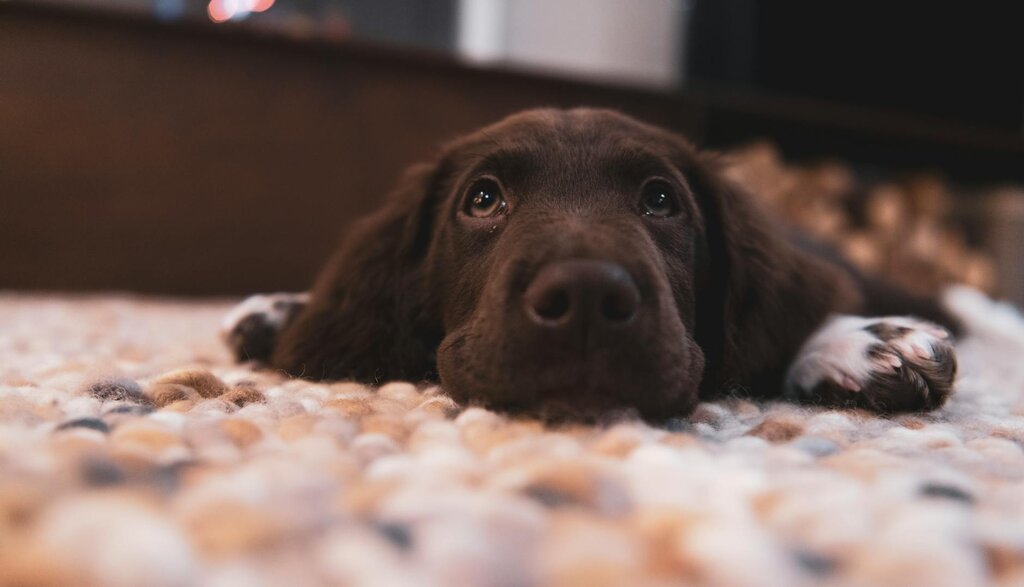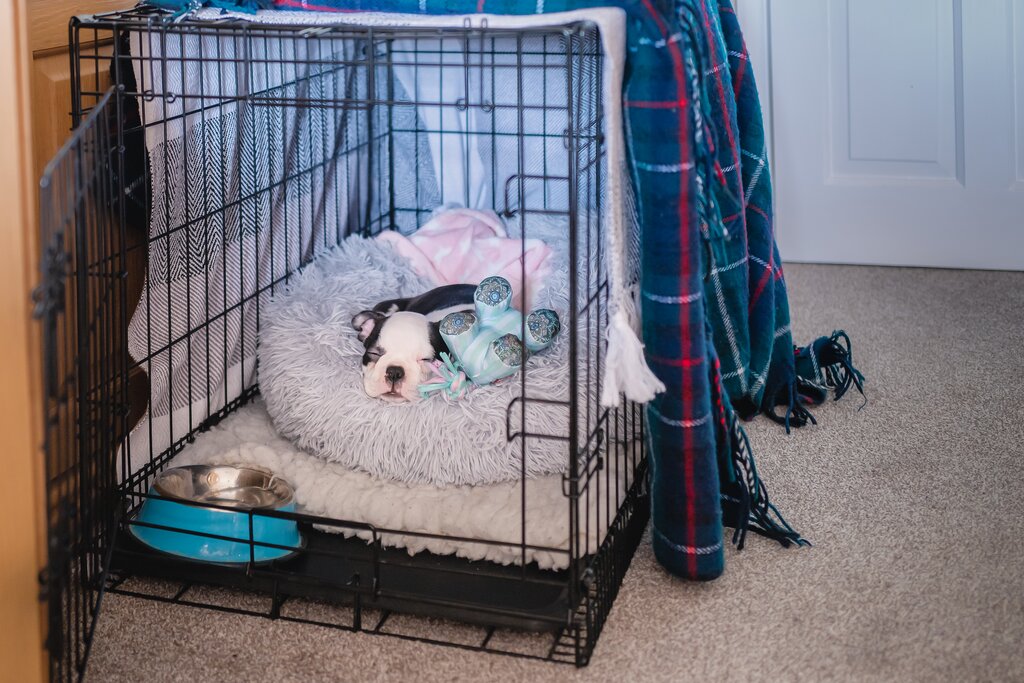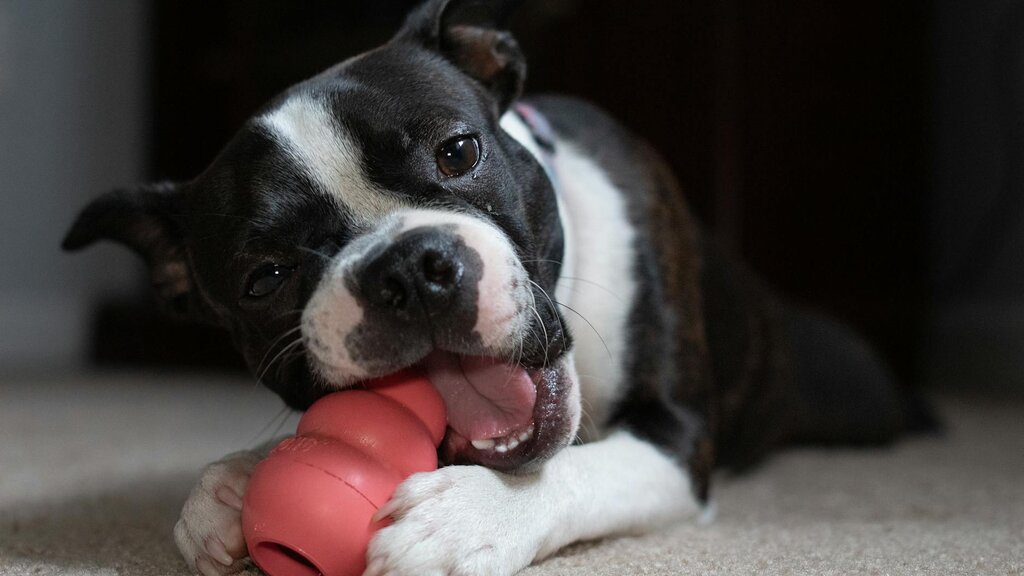Last Updated: 10/06/2025
Crate Training Your Puppy
Wondering how to crate train your puppy? Take a look at our step by step guide.
Author: Dr Teagan Lever BVSc (Hons)
Reading Time: 32 minutes - long read
Crate training is a way to create a safe, personal space for your dog in your home. It draws on your dog's natural instincts to create a den, a safe refuge in which to sleep and hide. Although adult dogs may be able to be crate trained, the ideal time to start is when your dog is a puppy.
There are many benefits to crate training your puppy. Crate training can be particularly useful with puppies as an aid to toilet training and preventing destructive or undesirable behaviours, such as chewing or digging. As dogs naturally avoid soiling their dens, it is a useful way to avoid accidents during toilet training, but remember though that your puppy will not be able to 'hold on' as long as an older dog, so be sure to provide them with plenty of toilet breaks. Crate training is also a safe and practical way to limit your puppy's opportunities to chew or destroy items in the house until he or she has learnt not to do this.
Dogs that have been crate trained can be transported calmly and safely as they are comfortable in the confinement of their crate. It can also come in handy should your dog need to be confined for medical reasons, for example while recovering from surgery. Finally, by establishing the crate as a safe haven you are providing your dog with a place to seek refuge from potentially scary or stressful events, such as thunderstorm or firework phobia.
Want to know more about puppy behaviours? Read our Complete Puppy Training Guide.
Steps to crate training a puppy

Step 1 - Get the right crate
Begin by purchasing an appropriately sized crate for your puppy - it should be large enough for them to stand up, turn around and lie down. Be sure to purchase one made of a durable material that will withstand any chewing or scratching. Now you are ready to start crate training!
Step 2 - Make the crate a cosy place
Begin by placing the crate in a central area of your home, for example the living room. Make sure that there is some comfy bedding inside for them to lie on if they choose. Put some treats or a favourite toy in the crate to make it attractive to your puppy. To make the crate an even more appealing place for your puppy, you could also place an adaptil diffuser nearby.
Recommended products for puppies
Step 3 - Introduce your puppy to the crate
Leave the door to the crate open, or take it off if possible, and encourage your pup to enter the crate. Encourage your puppy to enter the crate by luring him in with a treat. You may attach a command word to this like 'bed' or 'crate'. Reward him with the treat when he is standing inside and then close the door. Be sure to give him lots of praise. Never force your puppy into the crate.
Step 4 - Feed your puppy in the crate
Start to feed your puppy all of his meals near or just inside the crate. When he is entering the crate willingly you can start to place the bowl right inside. When he is relaxed about eating his meal standing fully inside the crate, you may start to close the door for short periods of time. In the beginning be sure to open the door again before he finishes eating. As he becomes more comfortable you can start to increase the amount of time the door is left shut after he finishes eating by just a little at a time.

Step 5 - Crate for longer periods while you're home
Start crating your puppy at other times while you are at home. Hang around quietly near the crate for about five minutes or so before leaving the room for a moment. Come back into the room and wait quietly again for a few minutes before opening the door of the crate. Start introducing voice cues (for example 'in your crate!') and treats to encourage entry.
Over the next few days and weeks slowly increase the amount of time that you leave him unattended in the crate. When he will stay quietly in the crate for 30 minutes while you are out of sight you can proceed to the next step.
Step 6 - Resist those puppy dog eyes
It can be very tough, but try not to let your puppy out if he is whining. This teaches him that crying will get him what he wants. Instead, wait for him to fall quiet before opening the door. If he doesn't settle, it could be that he needs a toilet break. Take him out quietly on a lead, without playing, and then bring him straight back.
Step 7 - Crate when you leave the house
Begin crating your puppy for short periods while you leave the house. Be sure not to linger over your departure. By prolonging your farewell or acting emotionally you may encourage separation anxiety.
Put him in the crate as usual, reward him with a treat and then leave. Try to alter your routine with this as you leave the house so that he is not able to anticipate exactly when you will ask him to enter the crate. It may be also helpful to leave him a toy to play with while you are gone, just be careful to choose one that is safe for him to chew on unsupervised. Always make sure that you leave him plenty of fresh water and ensure that he will not be too hot or cold while you are away.
In the same way that you left home, do not make a big fuss when you return home and avoid rewarding him for overexcited behaviour. So that your puppy doesn't associate the crate with being left alone, be sure to continue crating him for periods of time while you are home as well.
Addressing Potential Problems

Avoid excessive time in the crate
When crate training your puppy, it's crucial to avoid leaving them in the crate for excessive periods. While crates can serve as a useful tool for establishing a safe and secure space, prolonged confinement can lead to stress, anxiety, and even behavioral issues. It's essential to gradually increase the duration of crate time, allowing the dog to acclimate and associate the crate with positive experiences. Regular breaks for exercise, play, and bathroom breaks are vital to prevent boredom and restlessness.
How to deal with whining
Your puppy will undoubtedly cry during the training process. Dealing with whining during crate training is a common challenge, but with patience and consistency, you can push through. It's essential not to reinforce whining by responding to it. If your puppy whines, avoid giving attention, as this can inadvertently reward the behaviour. Wait for a moment of silence before opening the crate. Reward your puppy with treats and praise when they enter the crate willingly or remain calm inside. It can also help to exercise your puppy prior to crating them, and placing comforting items inside the crate.
Recognising and addressing separation anxiety
Recognising separation anxiety in a puppy during crate training is important for addressing the issue promptly. But it can be difficult to distinguish between separation anxiety and normal behaviours that will improve with further training and persistence. Signs of separation anxiety include excessive vocalisation, destructive behaviour, toileting accidents, escape attempts, and restlessness.
Ensuring safety in the crate
Ensuring safety is paramount when crate training a puppy, and certain precautions can contribute to a secure and positive experience. One crucial measure is removing the puppy's collar before placing them in the crate to prevent any potential entanglement or choking hazards. Collars with tags or dangling elements can pose risks during unsupervised crate time. Additionally, close supervision is imperative during the early stages of crate training. Keeping a watchful eye on the puppy allows for timely intervention in case of any signs of distress, discomfort, or attempts to escape.
Incorporating Crate Games

Incorporating games into crate training can make the process more enjoyable for your puppy and help create positive associations with the crate. Some games you can try include:
1. Treat Scattering: Scatter treats or pieces of your puppy's favourite food inside the crate, and let your puppy find the treats.
2. Interactive Toys: Provide interactive toys that dispense treats when manipulated. Place these toys inside the crate, encouraging your puppy to engage with them and associate the crate with fun.
3. Mealtime Puzzle: Use a puzzle feeder like a Kong toy filled with food. Place it in the crate during mealtime to turn crate time into an engaging and rewarding activity.
4. Hide and Seek: Play a short game of hide and seek with your puppy's favourite toys. Hide the toys inside the crate and let your puppy find them, associating the crate with a positive play experience.
Keep them entertained
Crate Training FAQs
Crate training may require some persistence and time but the benefits are plain to see. Be sure not to leave your dog crated for too long at any one time, all dogs require plenty of activity and socialisation to stay happy and healthy. The long term benefits of crate training undoubtedly outweigh the short term challenges, so be sure to stick it out and persevere! It is also important that you never use the crate as a form of punishment, it should be a safe and welcoming place that your dog will use voluntarily. Ultimately, if you can build a positive association between the puppy and the crate, you will have a perfectly crate-trained, well behaved fur baby in no time!
Further Reading
Want to read more? Check out our other articles:
History
Our experts continually monitor the health and wellness space and we update our articles when new information becomes available.
Feb 23 2024
Written by Dr Teagan Lever BVSc (Hons)Dr Teagan Lever BVSc (Hons)
Head Veterinarian, BVSc (Hons)
Pet Circle's Head Veterinarian, Dr Teagan graduated from the University of Queensland in 2010 and went on to work in small animal and mixed practice in various locations around QLD & ACT before joining Pet Circle in early 2016. Dr Teagan has special interests in dermatology, nutrition and preventative health care. She feels privileged to witness the special bond people share with their pets on a daily basis and enjoys forming lasting relationships with pet parents and their fur children.

